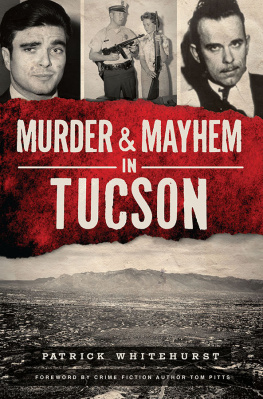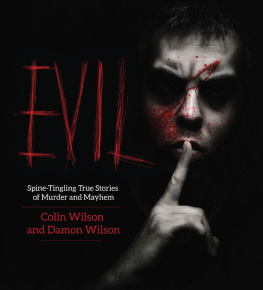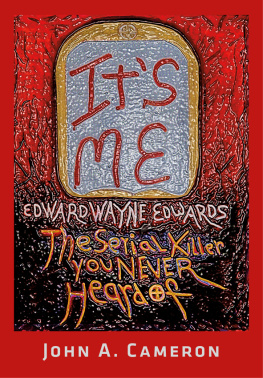

Published by The History Press
Charleston, SC
www.historypress.com
Copyright 2021 by Lisa Ann Merrick
All rights reserved
First published 2021
E-Book year 2021
ISBN 978.1.4396.7279.2
Library of Congress Control Number: 2021934594
Print Edition ISBN 978.1.4671.4795.8
Notice: The information in this book is true and complete to the best of our knowledge. It is offered without guarantee on the part of the author or The History Press. The author and The History Press disclaim all liability in connection with the use of this book.
All rights reserved. No part of this book may be reproduced or transmitted in any form whatsoever without prior written permission from the publisher except in the case of brief quotations embodied in critical articles and reviews.
To all of the Norton citizens past and present who have been injured, killed or impacted somehow in the following stories, it is an honor to keep your memories alive and sadly for some a tragic reminder of yesterday.
CONTENTS
ACKNOWLEDGEMENTS
First, I would like to thank everyone who helped me accomplish this personal goal of publishing my second book during the ongoing coronavirus pandemic. The virus made it exceptionally challenging to obtain materials either through email or phone calls or in person communication. I had to rely heavily on the Akron Beacon Journal for most of my information.
Jane Ann Turzillo, fellow author who has published through Arcadia and The History Press, was always available for questions small and large. Thanks for your assistance and your encouragement.
To Jerry Irby, thanks for your help on the Baltic/Deibel tales and to Janean Skiles Ray for computer assistance when my mastery of all things computer seemed dire.
To Patricia Snyder, curator for the Biery House and Museum, thanks for your support in this endeavor even though the topic is not your cup of tea. To Rodger Ramsthaler I give a nod for answering as many questions as I could come up with about the Norton area when all seemed futile.
INTRODUCTION
Norton, Ohio, became a township in 1818; founded on some of the finest land, it was acknowledged as an excellent agricultural community dotted with various large farms. These farmlands produced corn, livestock, wheat, oats and cattle. But with that type of production came some tragedy. Many farmers with multiple children worried about their crops and how they were going to feed and sustain their families. Sometimes the burden became too much for some of the farmers and the only way they could see to end their burden was to take their own lives. Barns easily caught fire by careless acts, lightning or lanterns. People would steal from them, including chicken theft. One of the worst times for farm burglaries was in 1886. Barn raising was an especially exciting time of year but was also the most dangerous. As men fell timbers, many a tragedy would occur. The hoisting of entire heavy barn sides might collapse on the men, sometimes to the horror of observing family members. Most homes had a water well, which in itself was a liability for young children. But even some adults were known to drown in what seemed to be such a small space.
Norton also had coal mining in the southwest corner, and early industries included gristmills, sawmills, tanneries and blacksmith shops. Many of the early industries were ripe for accidents, including fires, falls and assorted injuries each unique to its enterprise.
Norton has many waterways coming through the township (now a city) and made for easy access for swimming at the turn of the century and today. But with water can come the inevitable mishaps and drownings. As industry spread, along came rock quarrying and the subsequent deep-water lakes left behind. These were ripe for illegal nighttime swims and daytime trespasses by early youth.

Map of Norton.
The Atlantic and Great Western Railroad runs the entire length of the city from west to east, and before there were early warning signs, signals and gates, it was up to each individual to be on the lookout for the mighty monster, the locomotive. Many a horse and buggy, along with its occupants, never made it across the tracks, only to be dragged, run over or narrowly missed. Later, when the car was invented, numerous messy mishaps occurred while crossing those very same rails.
Norton boasted its own airport that had many names over the years, including Ling Field, Barberton Airport and even Sherman Airport. With accessible local flight came tragedy for numerous young fliers. And even the airport itself was not immune to its own frightful demise.
Over more than two hundred years, Norton has had its share of misdeeds and tragedy, some of which include murder, fraud, stabbings, neglect, shootings, hit skips and even a dynamiting incident.
Before you take the tour through some of the ugly and profound, lets understand the places in the township where these events took place. Inside you will find references to different areas in the Norton boundary. These are hamlets or crossroads that locals still refer to today. Each hamlet originally held its own specific industries, stores and schools. These hamlets include Norton Center, Loyal Oak, New Portage, Johnsons Corners, Hametown, Western Star and Sherman. For this reason, a map has been provided for the reader to more easily comprehend where each activity can be found. Many of the roadways that are mentioned are not on the map or might have been changed, but rest assured that all of the activities that have been listed are indeed fact.
So, let us begin our journey to some of Nortons most notorious, infamous, frightening, curious and sometimes sad incidents.
MURDERS
MOMMA KNOWS BEST
Two miles south of Johnsons Corners in Summit County, Ohio, Norton Township, a gunshot sounded one cold January night. A bullet in her right temple and left for dead, Minnie Berndt, seventeen, of Hametown lay in a hay mow on the Leo Deibel farm.
For four months, Berndt lay dead, and when she was found, the local coroner, L.B. Humphrey, described the scene. He reported that her extremities had all been devoured by rats, including her scalp. All that was left was her hair, which was partly used to identify the body, along with an identifying mark on her shoulder from a previously infected wound. Inside the raincoat that she had been wearing was a mass of putrefaction. Inside that putrefied mass of what was once Minnie Berndt was discovered the bones of her six- to seven-month-old fetus. A local doctor, J.S. Davison, remarked that an inspection on the inside of her skull revealed nothing left inside.
Berndt was working at the Barberton Pottery Factory, where she met Deibel, who was in a temporary position. Their friendship deepened, and they eventually fell in love. Berndt told coworkers that she was going to quit her job and marry Deibel. Later, she took a position working for the Diamond Match Factory, having said nothing more about being married.

Leo Deibel. Akron Beacon Journal, Newspapers.com.

Next page














